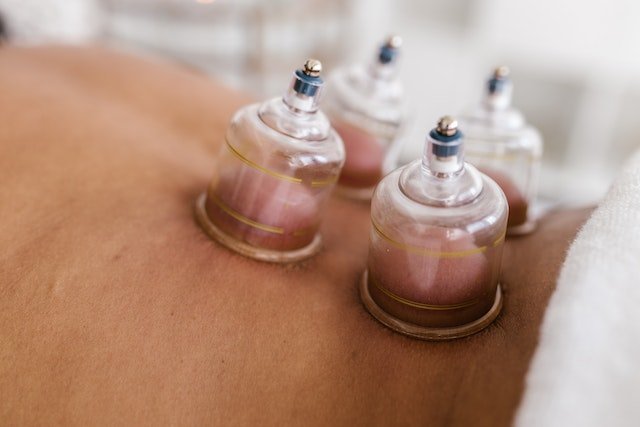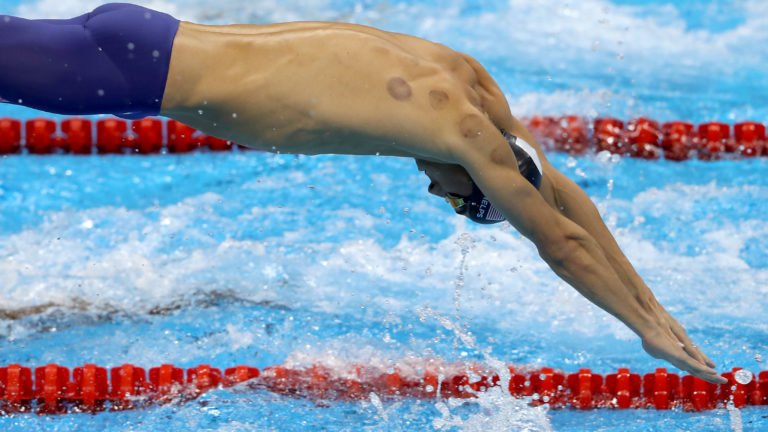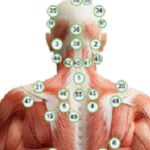Revival of Cupping Therapy in the Modern Era
What is Cupping Therapy?
Cupping therapy is an alternative approach to health and well-being that uses special cups to create a vacuum against your skin through the use of suction. This draws in new fluids and breaks down lesions while triggering the body’s own healing mechanisms. People get cupping therapy done for many purposes, which include but are not limited to pain relief, inflammation, improved blood flow, relaxation, and a variation of deep-tissue massage. The origins of cupping therapy is not definitively known but it seems to have been prevalent across the world before the evolution of modern medical practices in the 20th century.
What is the difference between Cupping Therapy and Hijama Therapy?
Cupping therapy generally does not use scarification on the skin to remove blood but rather uses suction to aggravate different areas and recruit the body’s own mechanisms to remove any blockages. On the other hand Hijama, also known as wet cupping requires a slight scratching of the skin to allow blood to flow and collect within the cup itself. Cutting the skin removes the blood that has settled (the skin acts as a local blood filter) and sends a pain signal to the brain that triggers the release of healing factors. Cupping therapy and hijama are both perceived as holistic therapies due to the impact they seem to have on the well-being of the whole body.
“The natural healing force within each one of us is the greatest force in getting well.” – Hippocrates
Does Cupping Therapy have side effects?
When practiced by a competent therapist there are very few side effects from cupping therapy, apart from the temporary marks on the skin which only last a couple of weeks. It is a good idea to explain these marks to any other health care providers so they aren’t mistaken for signs of physical abuse. Other issues that may occur are scars, burns, or infections which are more likely with Hijama / wet cupping. Certain skin conditions may be aggravated due to the initial release of toxins but this inevitably calms down as the body’s organs filter and excrete the waste through the bowels and bladder.
Michael Phelps is an Olympic swimmer who was seen with circular marks across his back from cupping. Cupping therapy has started to see a comeback even though the scientific community (see article) is cynical about its effects. Many atheletes have now come to use this tool and claim benefits beyond just recovery from exercise.
What is cupping therapy used for?
Cupping therapy is a holistic practice renowned for its multitude of benefits, ranging from pain relief and enhanced blood circulation to deep relaxation. Individuals who have experienced cupping therapy claim it is able to improve a plethora of issues ranging from back pain, neck pain, headaches, fertility problems, blood pressure. The evidence on its efficacy is mixed but the treatment risks are low leaving it an option for those willing to take a non-traditional route to any issues they may be facing.

Pain Relief
Cupping is often used to alleviate musculoskeletal pain, such as back pain, neck pain, and joint discomfort.
Improved Blood Circulation
Advocates suggest that cupping enhances blood flow, which may contribute to better circulation and oxygenation of tissues.
Reduce Inflammation
Cupping is thought to help reduce inflammation, making it potentially beneficial for conditions characterized by inflammation.
Relaxation and Stress Reduction
Many people turn to cupping therapy for relaxation and stress relief, as the suction and massage-like effect may help ease tension.
Detoxification
Some practitioners claim that cupping can aid in the removal of toxins from the body by promoting lymphatic drainage.
Respiratory Issues
Cupping is believed by some to be helpful for respiratory conditions, such as asthma and bronchitis, by improving lung function.
Digestive Disorders
Advocates suggest that cupping therapy may assist with digestive issues, including bloating and indigestion.
Experienced Cupping Therapist

Most hands on professionals are more than just having knowledge, rather they’re about judgement and experience. A young doctor will have seen far fewer patients and thus may not be able to ascertain the nuances of particular systems, on the other hand a senior doctor will immediately absorb all this information and due to experience will determine a much better diagnosis.
Cupping therapy is no different. We have over the years improved our technique, for instance we can discern from the type and state of the skin the approximate length of time cups should be left on to avoid burns and blisters. In wet cupping therapy, also known as Hijama, we’ve been accurately able to identify certain ailments due to the colour and thickness and appropriately advised clients to get tests done and visit the doctor.
Cupping Therapy / Hijama Research
Being avid researchers we’ve documented and mapped our successes and developed treatment plans for many common ailments that people suffer from, borrowing from acupuncture, acupressure, and the body’s physiology to create holistic multi-session plans that cleanse the body and then stimulate healing in particular organs and structures. This site shares these multi-session treatment plans with the specific cupping points while providing suggestions for natural treatments and lifestyle changes. The site is especially useful to therapists but can also be beneficial to individuals who have the appropriate training.
Possible Mechanisms of Cupping Therapy and Hijama
The body’s organs and structures are interdependent and thus there are many issues which impact other seemingly unrelated areas. Addressing one issue in isolation will rarely result in a complete resolution but rather it will reoccur in time or another issue will appear. One of the aims of Cupping Therapy and Hijama is to lighten the burden on the body so that it can focus its resources on the underlying issue and fix the root problem.
There are a number of theories which are almost certainly playing a part in any resolution of issues. The difficulty in measuring the impact is that each person is unique and the cupping therapy may effect them in completely different ways. Growth factors, which are not mentioned here, must be released by the brain since the aggravation and minor damage of structures and organs along with the localised bruising has to be healed. This will increase blood flow to the area and resolve just not the “damage” caused by the cupping but also try to fix any other underlying issues. Here are some of the possible areas in which cupping therapy and hijama may effect the body:
Pain Reduction
Pain Gate Theory – According to this theory, pain sensation can be modulated by non-painful stimuli, such as those induced during the suction and release process in cupping / hijama therapy. By stimulating specific nerve fibers, this ancient therapeutic technique may activate the “gate” that controls the transmission of pain signals, potentially offering relief and promoting overall well-being.
Reflex Zone Theory – Believes that the invisible pathway is cleared that runs along the body in a vertical form in which each point on the soles of hand and feet correspond to a specific organ.
Diffuse Noxious Inhibitory Control Theory – conditioned pain modulation (CPM) refers to an endogenous pain modulatory pathway which has often been described as “pain inhibits pain”. It occurs when response from a painful stimulus is inhibited by another, often spatially distant, noxious stimulus.
Immunomodulation Effects
Activation of Immune System Theory – Posits that the controlled suction created during cupping therapy / hijama stimulates the immune system by triggering a localized inflammatory response. This natural reaction mobilizes immune cells, promoting the removal of toxins and enhancing overall immune function.
Hematological Adjustment Effects
Blood De-toxification Theory – According to this theory, cupping therapy or hijama, is believed to facilitate the detoxification of blood by removing impurities and stagnant blood from the body. Proponents The suggestion is that suction created by cupping promotes improved circulation, allowing the body to expel toxins and enhance overall well-being.
Anti-Inflammatory and Increased Blood Circulation Effects
Nitric Oxide Theory – This theory suggests that the suction created during cupping therapy stimulates the production of nitric oxide, a vasodilator that enhances blood flow. By promoting circulation, nitric oxide may contribute to the the removal of toxins and supporting overall well-being.






